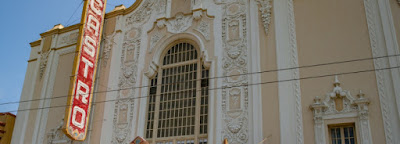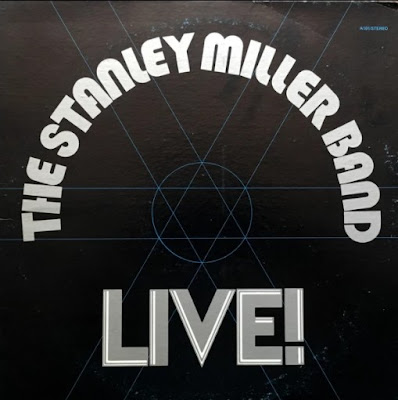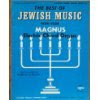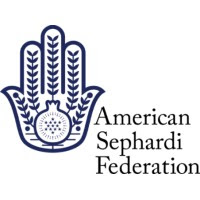Yes! Jimmy Buffet in Yiddish! Let's hear it for the Congress for Jewish Culture (אַלװעלטלעכער ייִדישער קולטור־קאָנגרעס)! In these days of military conflict, political antagonism, and pseuo-medical health idiocy (ivermectin? really?), the Congress identified a major yet unsolved Jewish problem and assigned the inimitable and thought-provoking Rokhlk to solve it.
 |
| Design by Evelyn Frick; Photo by Thomas A. Ferrara/Newsday RM via Getty Images |
James William Buffett (born December 25, 1946) is an American singer-songwriter, musician, author, actor, and businessman. He is best known for his music, which often portrays an "island escapism" lifestyle.
Together with his Coral Reefer Band, Buffett has recorded hit songs including Margaritaville (ranked 234th on the Recording Industry Association of America's list of "Songs of the Century") and Come Monday. He has a devoted base of fans known as Parrotheads.
Abq Jew cheerfully admits that he would have known nothing about this had it not been for Alma (a feminist Jewish culture site and online community), to which he subscribes; and, in particular, Chloe Sarbib, a Brooklyn-based writer and filmmaker and Alma's associate editor of arts and culture. Who recently wrote:
The Yiddish Cover of Jimmy Buffett You Didn’t Know You Needed Yes, you read that right.
Have you ever thought to yourself, “Wow, I really wish someone would cover a Jimmy Buffett song in Yiddish?” I can’t say I ever had — but once it was presented as an option, I thought it was a pretty great idea.
Journalist-playwright-Yiddishist Rohkl Kafrissen [Rokhlk] has just done exactly that, even changing the lyrics and context of the song to better fit, well, Yiddish.
The path that led from Margaritaville to the mame loshen is surprisingly easy to follow. As Rokhl described in her newsletter, it all began this spring, when, amidst the electric energy of a New York City that thought it was about to get vaccinated and exit the COVID pandemic (oh, how young and naïve we were), Jimmy Buffett was set to open his first Margaritaville resort in the Big Apple.
In Kafrissen’s words, “thanks to a real estate quirk, he was forced to make room onsite for the historic Garment Center Congregation. This made it the only Margaritaville property in the world with a working shul.
How better to welcome Jimmy Buffett to New York than by recording my Yiddish cover version of his 1973 novelty hit, ‘Why Don’t We Get Drunk and Screw?’ Six days a week you can drink all the margaritas you want, but on the seventh day, God commanded us to pick up a glass of wine, damnit.”
Kafrissen collaborated with the Congress for Jewish Culture to make the song happen. Though, as with many things these past few months, the song’s creation had a few false starts before it actually took off, she did ultimately enlist a formidable crew of klezmer performers: Sasha Lurje (voice), Craig Judelman (violin) and Lorin Sklamberg (guitar, voice).
Of course, it wasn’t enough to merely translate the song’s existing words into Yiddish; the whole scenario had to be transposed to be more Jewish. Kafrissen was up to the task. “I decided to take Buffett’s song as a starting point,” she said. “Instead of a man propositioning a woman at a bar, I rewrote it from a woman’s point of view.”
In her lyrics,
“a woman is singing to her husband at the beginning of Friday night dinner. He sings the kiddush beautifully. But they’re all alone, and she just went to the mikveh. Maybe just this once they could skip dinner and go straight to dessert?”
She feels her protagonist’s frustration is apt for the moment we’re all experiencing: We were promised a summer of hedonism, only to have gratification delayed again by the virus.
According to the CJC, the new Yiddish version, called “Kum tsu mir” (Come to Me), “blends Buffett’s boozy, chilled out vibe with a heymish, New York point of view.”
Now that is what Abq Jew calls good writing. Which is why he took Chloe Sarbib's entire article and just plunked it down here, in complete violation of an entire plethora of US copyright laws, UN resolutions, and international conventions.
UPDATE: The Times of Israel has picked up this story!
Yiddish Lyrics
Dayn kol klingt mole-kheyn
Your voice is full of charm
Kidesh makhste vunderlekh
The way you make kiddush is wonderful
Un dayn ponim, likhtik sheyn
And your face is shining so bright
Nu, ketsl, nokh a glezl
So baby, one more glass
Mashke, vayn, tsi bir
Whiskey, wine or beer
Ober loz oys di [ha]moytsi
But let’s skip the motsi [blessing on the challah]
Kum tsu mir
Come to me
Loz oys di [ha]moytsi, kum tsu mir
Let’s skip the motsi, come to me
Ikh hob zikh, haynt getoyvlt
I just went and ritually cleansed myself
In der mikve nor far dir
In the mikve just for you
Me ruft dikh a min tsadik
They say you’re really saintly
Oyneg-shabes on a shir
It’s shabes pleasure, without end
Ketsl loz oys di [ha]moytsi
So baby let’s skip the motsi, come to me
Kum tsu mir
Come to me









































